« Boujou » !
Cows grazing peacefully in green fields under apple trees, half-timbered cottages, cider and Calvados, creamy cheeses (Camembert, Livarot or Pont l’évêque) and the landing beaches of the D-Day… you know immediately what part of France I am describing, right ? No ? “Oh my god !”, still stumped ! Let me add: it rains often… Ah, finally – there is a light at the end of the tunnel – of course, it is Normandy. Beyond all the clichés that stick to Normandy like a caramel candy sticks to your teeth, this region is above all a land of tradition. Its architectural heritage testifies to the power of the duchy of Normandy in the Middle Ages, and its exceptional landscapes still bear the scars of war. Whether you want to expand your cultural knowledge by visiting castles, abbeys, cathedrals (such as Bayeux) and basilicas (St Thérèse de Lisieux), to play the gourmet by following cider or cheese roads, to simply enjoy the tranquility of the green Bocage countryside, or to marvel at the fury of the allied landing in 1944, Normandy offers you infinite possibilities. Let’s go to this region between land and sea, yet so close to Paris…

The pointe du Hoc
Can a filmmaker dream of a scenario more epic than the Normandy landings, codenamed Operation Neptune, the most impressive and most famous military operation of the Second World War ? Shortly before dawn on June 6, 1944, D-day, some 156,000 Allied soldiers, stormed the “Atlantic Wall”. This military operation became a framework for filmmakers and screenwriters after the war. It featured a dangerous but crucial mission, soldiers’ courage, Eisenhower’s strategic expertise, the involvement of all anti-Nazi forces… Like most of us, I saw the two most iconic films, “The Longest Day” produced by Darryl Zanuck in 1962 and “Saving Private Ryan” directed by Stephen Spielberg in 1998, and the television series “Band of Brothers.” When you find yourself in Normandy, a veritable open-air museum where many marks of the landing and battle are still visible (batteries, bunkers, cemeteries…) reality far exceeds fiction and grabs your heart. I located the mythical names I heard in the films: Utah Beach, Juno Beach or Omaha Beach. Pointe du Hoc is one of the must-see attractions between Omaha Beach (on the east) and Utah Beach (on the west), “The Pointe du Hoc had to be taken, the success of the D-Day landing depended on it“. This rocky spur located between two magnificent beaches is a 100-foot cliff overlooking the Norman coast and the English Channel. A strategic spot on the Atlantic Wall fortifications, the Germans built an artillery battery here to prevent an Allied landing. In April 1944, the location was bombed to prevent the Germans using the casemates for observation. The traces of the assault by Lieutenant Colonel J. Rudder’s Rangers on June 6, 1944, are still visible. The assault of the Pointe du Hoc was one of the most challenging battles of the landing. After two days and two nights, of the 225 American Rangers who scaled the cliff under enemy fire only 90 Rangers were still alive and able to continue… Even today little has changed since 1944, one can feel the fierce intensity of the fighting by walking in this lunar landscape, covered with deep craters formed by the impact of the bombs of the English and American Air Forces, and by discovering the vestiges of bunkers, artillery batteries, casemates, shelters… Finally, you can also revive the landing on guided tours on board a Willys Jeep, an armored vehicle or an amphibious truck, all from the epoch !
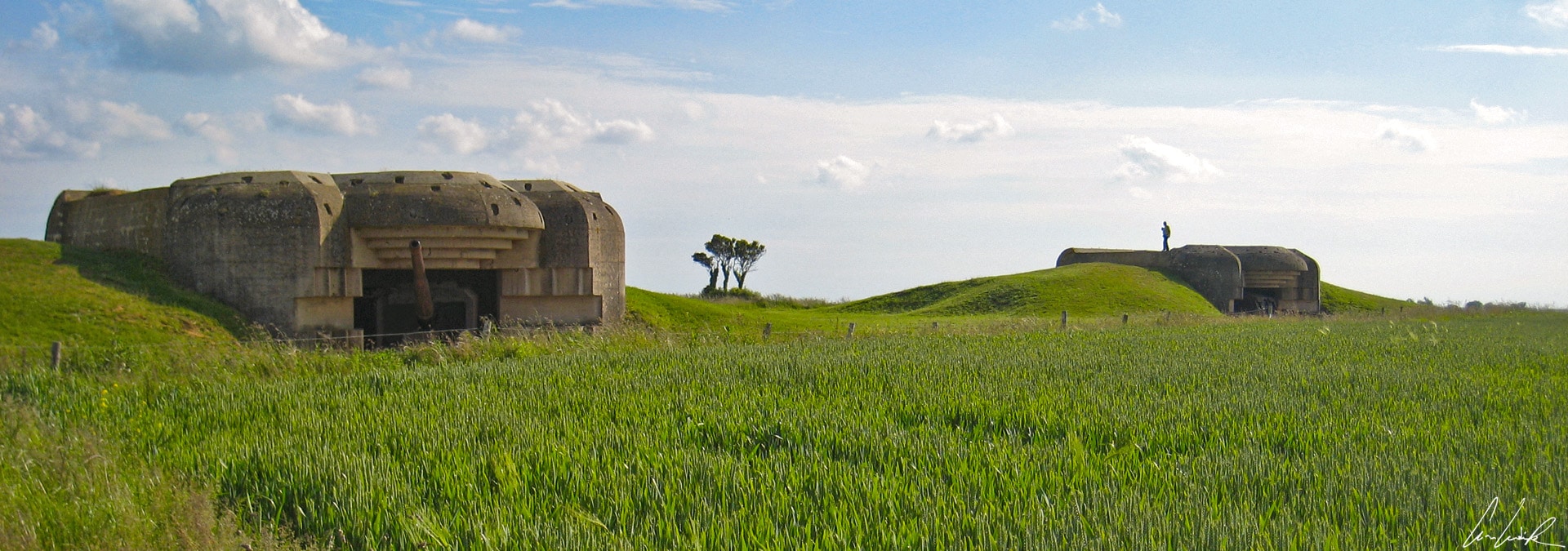
The pointe du Hoc, artillery batteries
In another moving testimony to this great battle, the region is dotted with numerous cemeteries where thousands of graves of soldiers. The German military cemetery of Saint-Désir about 2 miles west of Lisieux in the direction to Caen is a place of memory and emotion containing the graves of 3,735 German soldiers who died during the Battle of Normandy. Just adjacent to the German cemetery is a British military cemetery with 598 graves. These two cemeteries are linked by an alley called the “Allée de la Paix”. Here I find both the horror and the heroism of the war. The words of Born in ‘17 in Leidenstadt by the French singer Jean-Jacques Goldman come to mind, “You never know what you really have in your guts, / Hidden behind our appearance / The soul of a brave man, a collaborator, an executioner? / The worst or the best? / Will you resist or just follow like sheep. / Is it just a choice of words ?/ And can we somehow put of choosing sides, for as long as possible”. Nearby, overlooking Omaha Beach, one of the landing beaches of the Normandy invasion, lies the American cemetery and memorial of Colleville sur Mer. It covers 172 acres and contains the aligned graves of 9,387 American soldiers, men and women. A memorial to the missing 1,557 Americans stands at one end of the cemetery. Like other American cemeteries in France, the French government has granted the United States a perpetual concession to the land occupied by the cemetery, according to the formula “En témoignage de la reconnaissance de la France envers le sang versé” (In testimony of the recognition of France for the bloodshed”. The tombs are surmounted by a stela of white Italian marble in the shape of a Latin cross or a star of David. Four women are buried in this cemetery. Among the burials are three recipients of the Medal of Honor, including the two sons of the President Theodore Roosevelt, Theodore Roosevelt Jr., and Quentin Roosevelt, who was killed during World War I. This may seem strange but on none of the crosses or stars is mentioned the date of birth or age of the killed soldier – the reason for this is simply lack of space on the cross… Finally, for soldiers whose identity is not known, the cross, or the star, bears the words: “Here rests in honored glory / A comrade in arms / Known but to God“. It makes me think of a scene between a little boy and his grandfather in the HBO series “Band of Brothers“. The little boy asks “Grandpa were you a hero in the war ?” Veteran Dick Winthers replies, “No, not a hero, but I served in a company full of them“.

British military cemetery of Saint-Désir
A golden beach, where birds soar and foam rolls… Everything is so beautiful under the setting sun, and yet this place has something solemn and heartbreaking. I still remember this famous reply from General Norman Cota (played by Robert Mitchum) in “The Longest Day“, “There are two kinds of people staying on this beach: those who are dead and those who are going to die. Now let’s get the hell out of here”. However, on this landing beach, Arromanches, we commemorate not only a sacrifice but also an incredible technical achievement. Allied troops constructed an artificial harbor with huge reinforced concrete boxes baptized Phoenix (19 tons each) and a floating metal roadway (24 meters long and weighing 28 tons) manufactured in England. On the facade of the Landing Museum, a text reminds us of this historic event with poetry: “Ils ont construit un port / Au beau milieu des flots / Ils ont construit un port / Sur le corps des bateaux / Et par nuit de brouillard / On devine sous l’écume / Absorbés par le soir / Tes pontons dans la brume” (They built a port / In the middle of the waves / They built a port / On the bodies of the boats / And by night and fog / Hidden under the foam / Absorbed by the evening / Your pontoons in the mist). Like a huge Meccano, the floating metal roadways were laid on the concrete pillboxes. 150-meter long sections, each consisting of five assembled roadways, towed one by one across the English Channel before being connected to each other… The Allies assembled more than 10 miles of floating roadway forming a huge artificial pier, which was then used to supply troops the first day of the invasion with weapons, ammunition, fuel, foods, etc. The design was developed in secret as early as August 1943 under the code name “Mulberry”. Initially, three designs for artificial harbors were in competition: Hugh Lorys Hughes developed his “Hippo” pier and “crocodile” bridge spans; Ronald Hamilton developed the “Swiss Roll” consisting of a floating roadway made of waterproofed canvas stiffened with slats and tensioned by cables, and Major Allam Beckett designed a floating bridge linked to a pier head, later codenamed “Whales”. The prototypes were tested in Scotland in the Gulf of Solway Firth. A storm divided the three competitors: only the famous “whales” survived undamaged and demonstrated their effectiveness; the “Swiss Roll” was washed away by the furious sea and the “crocodiles” did stand up to the violence of the storm !

Arromanches under the setting sun
This morning many people are enjoying the beach at low tide, isolated or in groups, individuals wander around at a snail’s pace, each in his own thoughts… The beach of Arromanches gives visitors some reminders of the tremendous effort involved in the Allied invasion to liberate France. Some pieces of concrete stick up in the blue water here and there, shaped in mysterious forms, and vestiges of this technical achievement. One can touch, bypass some of those big concrete boxes baptized “Phoenix” lying on the sand since 1944, on which small algae has managed to nest in the alveoli of the concrete. It is hard to imagine that over just a few months of operation, this artificial harbor, codenamed Mulberry, was built on these few pillboxes and metallic floating roadway called “Whales”. This temporary harbor was supposed to last three months but served for five. It allowed the landing of 2.5 million men, 500,000 vehicles and 4 million tons of supplies before being dismantled at the end of the war and then sold. Some of “whale” bridges from Arromanches were used to repair bombed bridges. Today 10 bridges are still in use, two in the Territoire de Belfort in eastern France, the Foussemagne bridge, and the bridge of Chaux, two landmarks deserving the deepest respect.
« see ya ».
Discover my others articles about France
- Normandy, between “War and Peace”
- The Mercantour: destination Merveilles
- A journey in the Mercantour…
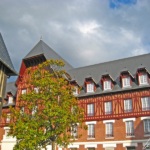

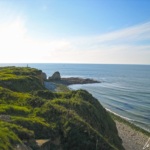

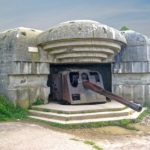


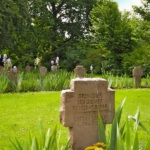
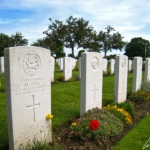

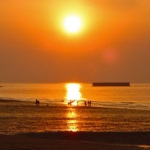
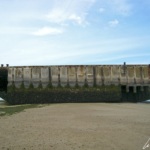



The pointe du Hoc is filled with so much history! I can’t wait to visit myself.
I’ve been to France a few times but still haven’t been to Normandy. It is amazing to think of this beautiful place as having once a sad history where so many lost their lives.
This is such an interesting read. I don’t know much about this era in history, but it is so relevant to my heritage (being part german and part english!). The words engraved on the crosses/stars for the unknown soldiers are so poignant but beautiful!
I have *always* wanted to visit Normandy and your pictures are so inspiring! I need to make this happen!
After reading your post, I can only think of how little I know about France. I have visited several parts but there is still a lot to see. Never been to Normandy but what you have described, history, architecture and food, fills all the “must” buckets for me. This year I won a stay in Champagne and not sure if I will be able to use it (I have to pay my air tickets). But, maybe I should tour several areas of France. That will be great.
While I have not been to these historic beaches I can imagine how contemplative it could make one feel. While I have only been more east in Normandy and the magnificence of the landscape coupled with the stories of those battles could only make one reflect
The place looks so serene. The green fields, beach and everything look so beautiful. And I am intrigued by the history of the place.
Wow. Looks like you had a great time. I love nature and the greenery. Love your photography too :1
These beaches are just amazing, although the history is so so sad 🙁
How moving. It is such a somber visit to these type spots in the world. It makes you appreciate freedom so much. <3
Normandy is so beautiful. I love the sunsets and the beaches. I would definitely want to add it to my to visit list .
What breathtaking photos! Thanks for sharing so many details about D-Day. I would recommend that you make the font a little bigger or put more space between the lines. They were so close together it was tough to follow at times!
Thanks for a brief war history! I didnt know that Normandie was imprinted so much the war! And I didnt it was so beautiful! To be honest, I didnt know much about Normandie at all!
Wow! I have no words… Thank you for sharing this…. The place looks awesome…
It’s such a wonderful place with a melancholic past. Very informative post, i’ve always been curious about a place’s historical past.
Normandy was one of the places I was familiar with even as a youngster. I just didn’t know where it was. We used to practice typing and the sentence included something like the quick brown fox in Normandy hahaha Now looking at the photos here makes me think I am destined to visit this place. I love the grass and the setting sun is amazingly romantic. For some reasons, I may have to skip the cemetery though.
I have never heard about this place. so rich with history and so beautiful at the same time!
It’s such a wonderful place with a melancholic past. I’ve always been curious about a place’s history!
Normandy looks really great. I’m fascinated by the rich history and how peaceful and green everything looks. 🙂
You just make me remind that I need a vacation from all this work. Thanks for sharing the tips. Glad i stop by your blog.
Oh this is such a stunning beach. I would love to visit sometime. Those cemetaries must have been so intense, having to be between so much history from different countries. I’d love to visit normandy one day.
It is a part of France I never been too! Definitely on my wish list, especially for the historical part – but also for the foodie delices waiting for me!
The photos are so cool. I really like the bunkers, haven’t seen such in person.